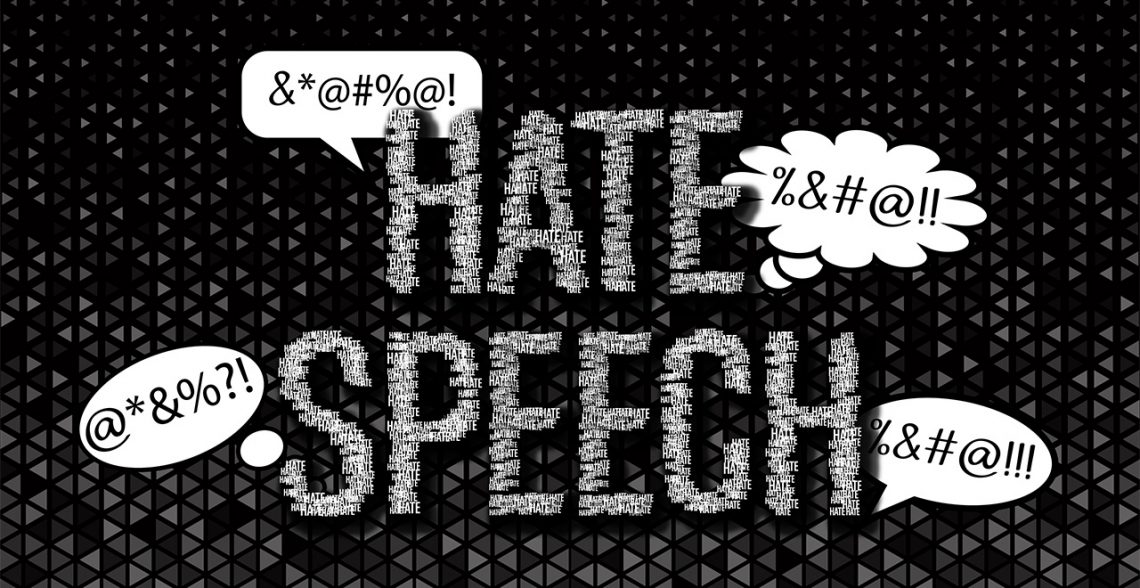
By Neslihan Ecem Kapar
One can easily estimate the triggering and dangerous power of hate speech in community interactions. In today’s world, those interactions are mostly made via social media. Especially if you want to reveal the controversial thoughts in your mind without revealing yourself, social media can offer incredible opportunities. Twitter’s character limit is not enough for freedom of thought to reach any limit at some point. In this article, we will talk about a study that aims to analyze the correlation between hate speech on Twitter and social acceptance towards immigrants in the same region.
This major study, entitled “Hate speech and social acceptance towards migrants in Europe: Analysis of tweets with geolocation and funded by the European Union has been carried out by the Observatory of Audiovisual Content of the University of Salamanca, was published in Comunicar, one of the leading journals in Spain.
The aim of the study was to analyze the social acceptance of migrants and refugees in Europe using hate speech online like a predictor of “acceptance” thanks to the collection, recording and analysis of about 850.000 tweet spread in the European Union between 2015 and 2020.
The study is mainly based on the Intergroup Contact Theory (ICT) of Gordon Allport and has compared the percentage of migrant residents and the hate speech against them. So basically, the correlation between the number of migrant people and (i) the hate speech on Twitter, (ii) the hateful act in person towards them is examined in this study. The results have been compared with data collected by Eurobarometer on average public opinion regarding support for measures to integrate refugees.
According to the ICT theory’s suggestion, if social contact between groups increases, it is possible that prejudices decrease, and social acceptance increases. This social contact has 4 basic conditions. In order for the desired effect to occur, the groups in question must have common goals with equal status. They must also be in a situation where they are cooperating, not competing. Finally, they need to get support from officials and authorities of the government.
Three hypotheses were assumed. 1. ‘‘The share of immigrant population in European regions is positively correlated with citizens’ support towards that group, so that the higher the percentage of immigrants, the greater the support towards them.’’ 2, ‘‘The share of immigrant population in European regions is correlated with the level of hate on Twitter, so that the greater the percentage of immigrants, the lesser the hate.’’ 3. ‘‘the level of hate speech on Twitter towards migrants and refugees in European regions is correlated with the degree of citizens’ support for these groups, so that the lesser the level of hate speech, the greater the acceptance of migrants and refugees’’
While tweets were used as the primary source for the determination of these hypotheses, many secondary sources were used to confirm these tweets and compare them with other findings. Various studies, surveys and researches are among them. 3 main variables were taken as a basis in the study: the level of hate speech, the level of support, and the level of the immigrant population residing in the area.
The main results of the study
The first hypothesis, Allport’s main prediction, was proved by the data. So, it has been verified by comparing the number of immigrants in the region with public surveys that the social acceptance increases as the number of immigrants increases in a region.
Unfortunately, the second hypothesis could not be confirmed. In other words, with the increase in the number of immigrants in a region, the number of hate speech on Twitter does not decrease, on the contrary, it increases. The researchers of the Salamanca university explain this result assuming that people on social media shelve the “appropriate behavior” patterns accepted in the society: “social media and virtual communities can provide users with anonymity for them to express their real ideas and opinions, thereby changing their behavior online from their real-world behavior”. It’s interesting to observe that the highest level of hate speech against migrants and refugees has been noted in Italy and in Greece.
The last hypothesis was likewise confirmed by comparing the data from the Eurobarometer with the data from Twitter. In other words, more support for immigrants among the public can be associated with less hate speech on Twitter.
Finally, to clarify, one of the main aims of this study was to predict the point at which social acceptance of immigrants at the borders of the European Union might evolve in the future. Relying solely on public surveys would narrow the scope of the research and make it impossible to understand people’s true thoughts. By evaluating the hypotheses, we learn that even if people behave more cohesive in public, they can show their different opinions through social media. In other words, social communication tends to differ when an intermediary channel is involved. On the other hand, increasing solidarity results in a decrease in hate speech. Therefore, this study shows us that the survey results could not be directly correlated with actual thoughts of people. It opens innovative lines of research and broadens our perspective.
The study can be found in the following link: https://www.revistacomunicar.com/index.php?contenido=online-first&doi=10.3916%2FC71-2022-02&idioma=en
Project website: https://pharmproject.usal.es








